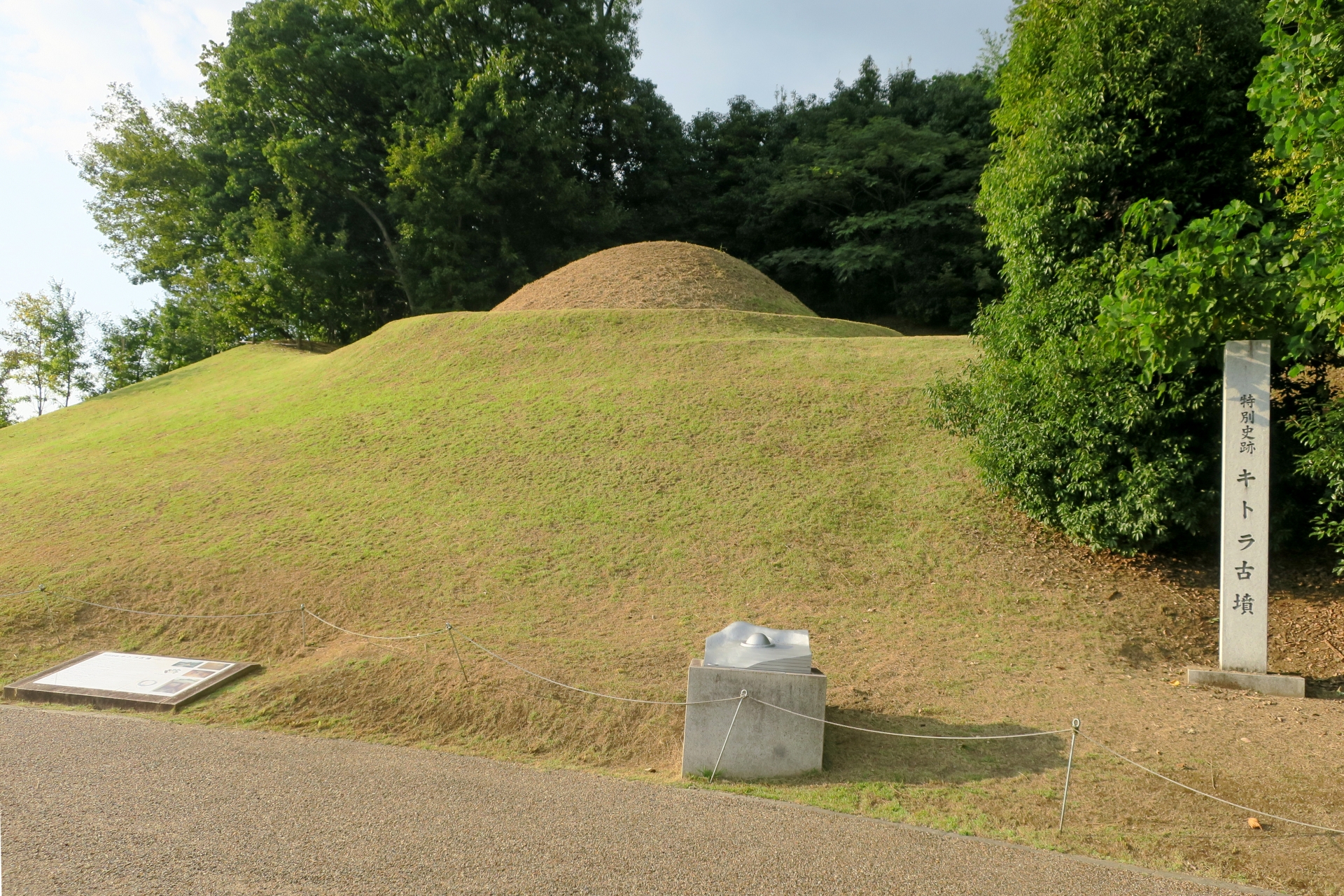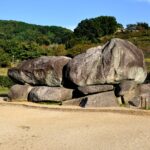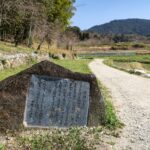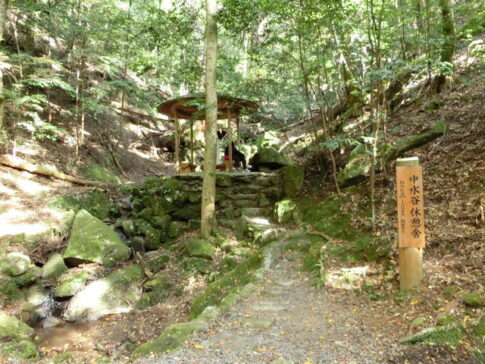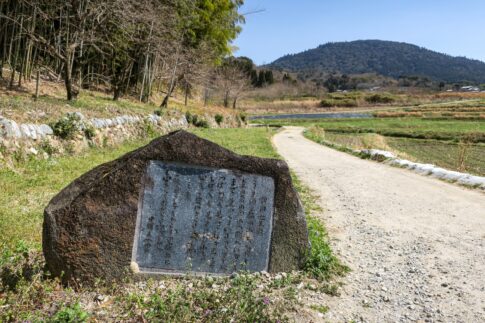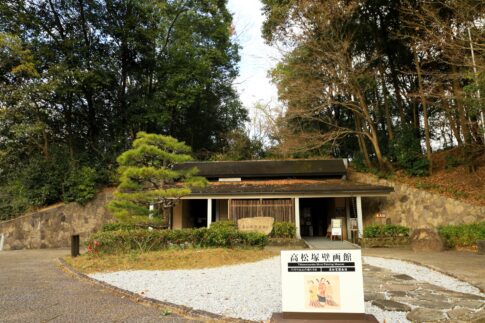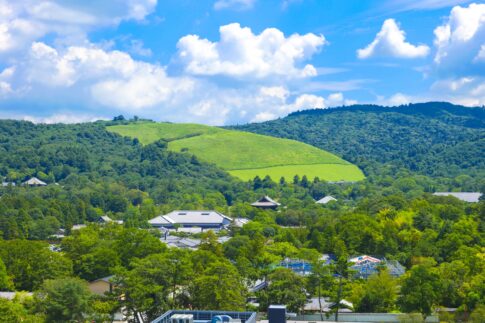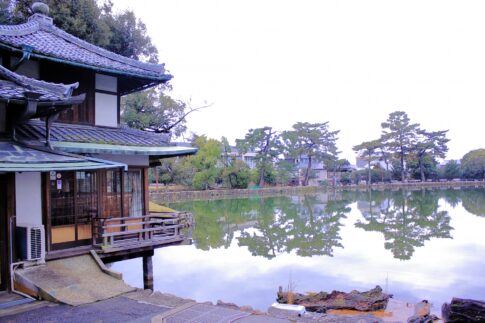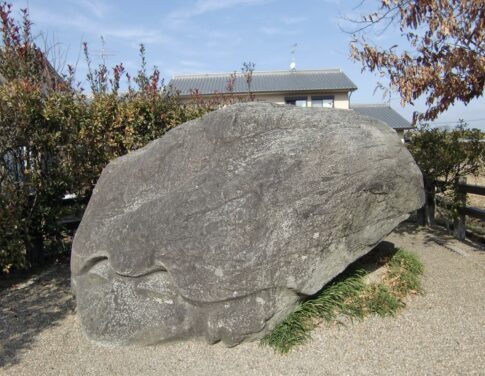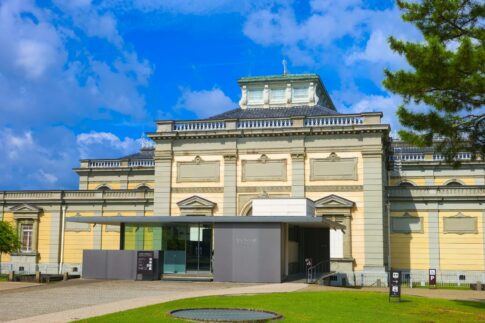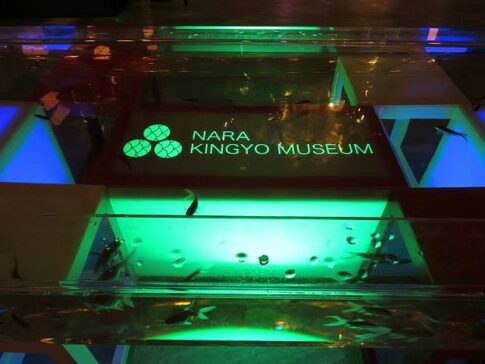Are you interested in tumulus?
Is you are, you should not miss this place!
What you need to know before visiting Kitora Tumulus
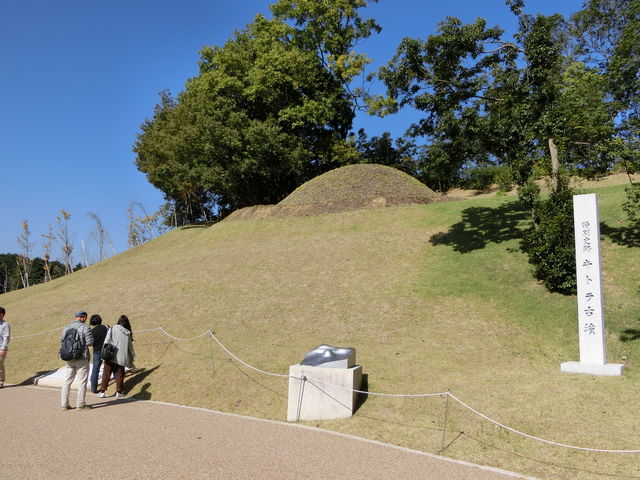
1. Basic Information
The Kitora tumulus is the second continental-style mural burial mound discovered in Japan after the Takamatsuzuka tumulus.
It is located halfway up the mountain, beyond the village of Hinomae, on the way to Mount Abe.
It is a two-tiered circular burial mound, with the upper stage measuring 9.4 m in diameter and the terrace-like lower stage 13.8 m in diameter.
The origin of the name is said to be that it was called “Turtle and Tiger Tomb” because a wall painting of a turtle and a tiger could be seen when looking inside, or that the name of the place to the south of the burial mound, “Koza Kitaura,” is a pun on “Kitora,” and that it was called “Turtle and Tiger” because the turtle (Genbu), one of the four gods, controls the north and the tiger (Byakko) controls the west, since the Kitora Tomb is located to the northwest of the Asuka Village community of Abesan There are various theories, such as the theory that the name “Kitora” was derived from the turtle (Genbu), which controls the north, and the tiger (Biyakko), which controls the west.
On November 7, 1983, the discovery of Genbu, one of the painted murals in the stone chamber, drew public and academic attention, and in 2000 it was designated as a National Historic Site, followed by the designation as a Special Historic Site.
The ceiling of the stone chamber is decorated with authentic astronomical charts, and the walls are decorated with beautiful paintings of the four deities that are believed to protect the four directions and the twelve signs of the Chinese zodiac.
It is located to the south of the Kitora Kofun area in the National Asuka Historical Park.
2. Period of construction
It is estimated to have been built around the end of the 7th century to the beginning of the 8th century.
This is the end of the period known as the Kofun period.
The tumuli of this period are called Terminal Kofun Tumuli, and their shapes have changed from the huge round rear-front tumuli of the Early Kofun Period to round and square tumuli, and the tumuli themselves have also become smaller.
3. Whose burial mound is it?
Various people have been imagined, including Emperor Temmu’s son, Koichihoko; the Baekje King Masanari, who was a high-ranking official; and the right minister, Abe Goshujin, since the area around the tumulus is named “Mount Abe” (Abeyama).
The gold and silver burial accessories and the wooden coffin, which is presumably richly decorated, indicate that the tomb belonged to a person of high rank.
4. About the Murals Inside the Tumulus
The wall paintings in the Kitora Tumulus were painted with delicate brush strokes on the plaster applied inside the stone chamber.
They are cultural assets of high academic value, with authentic astronomical drawings, statues of all four deities, and statues of the twelve signs of the Chinese zodiac with animal heads and human bodies.
5. Astronomical Drawings
The astronomical chart on the ceiling is the world’s oldest existing scientific astronomical chart. The celestial equator and the ecliptic, the path of the sun, are depicted, and Chinese-style constellations, including the Big Dipper, which was believed to have great magical power, are arranged. The sun and moon are also depicted.
- The Four Divine Elephants
Blue Dragon
Although many parts of the painting are hidden by the mud that flowed in through the gaps between the ceiling stones, two horns, a wide-open mouth, a long tongue and lower jaw can be seen.
White tiger
Contrary to the usual white tiger (e.g. Takamatsuzuka burial mound), this figure’s head is facing north. It is slender with a long neck, both eyes wide open, and its front legs outstretched, giving it a dynamic appearance. The hairs on the ears and black eyes are also depicted in detail.
Vermilion Sparrow
The image of Suzaku, which was lost in the Takamatsuzuka burial mound, remains in the Kitora burial mound. It is very rare to see such a dynamic figure kicking the ground and spreading its wings, as if about to take flight at any moment.
Genbu
Genbu is a tortoise with a snake entwined around it. The body of the snake has a spotted pattern, and the edges of the tortoise’s shell have a circular pattern.
- Twelve statues of the Chinese zodiac with the heads of animals and human bodies
One of the features of the wall paintings of the Kitora Tumulus is that it depicts a beast-headed human figure representing the twelve signs of the Chinese zodiac with an animal head and a human body.
In ancient China, it was customary to place the twelve zodiac signs of the Chinese zodiac (yong), and in the case of the Kitora burial mound, it is thought that these dolls were painted as a mural painting to protect the souls of those buried there.
6. Background to the Discovery
Immediately after the discovery of the Takamatsuzuka burial mound mural paintings, a nearby resident informed us that there was a similar burial mound nearby, and this was the clue that led to the excavation of the Kitora burial mound.
In 1983, a fiberscope survey was conducted, and a mural painting on the back wall of the stone burial chamber was discovered, which was thought to be a genbu (a Japanese warrior warrior warrior).
Fifteen years later, in 1998, a CCD camera, which can be oriented vertically and horizontally, discovered a blue dragon, a white tiger, and an astronomical drawing.
Then, in 2001, using a digital camera, we confirmed the presence of a Suzaku on the south wall, and also confirmed the presence of twelve animal-headed human figures of the twelve signs of the Chinese zodiac.
7. Conservation of the Kofun Tumulus
The Agency for Cultural Affairs began a survey of the stone chamber in 2003 (Heisei 15).
As a result, the wall paintings were found to be extremely fragile and would eventually collapse if left in place, so in order to protect them, they were removed in earnest for the first time in Japan in August 2004.
The removed wall paintings have been meticulously repaired and strengthened for conservation and management.
The tomb itself was covered with the same stone as the stone chamber and backfilled.
The Nara National Research Institute for Cultural Properties is the main institution involved in the research, conservation, and exhibition of the murals and the tomb.
The actual mural paintings are open to the public for a limited period of time and with prior registration at the “Kitora Kofun Mural Painting Experience Center” on the first floor of the “Kitora Kofun Mural Painting Experience Center: Hall of the Four Gods”.
Summary
This is one of the oldest burial tumulus in Japan. If you are a fan of historic ruins, you must check here!
